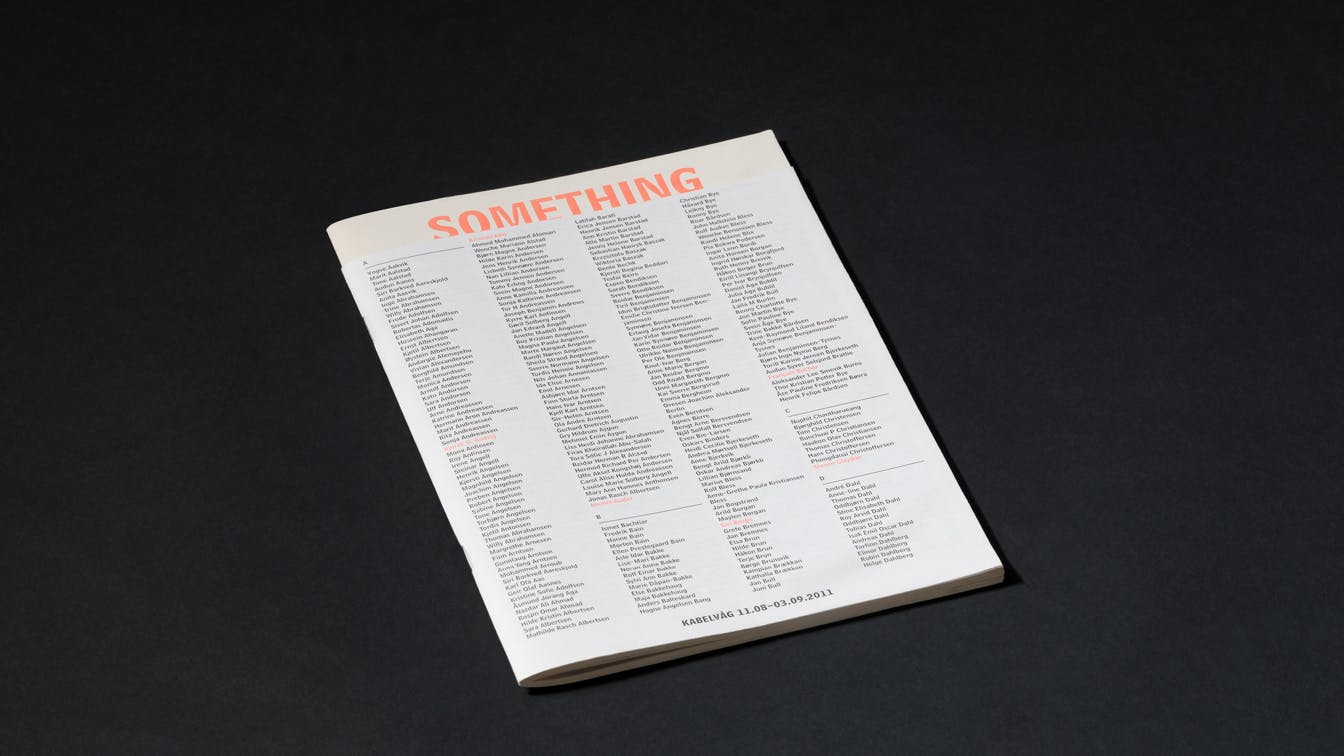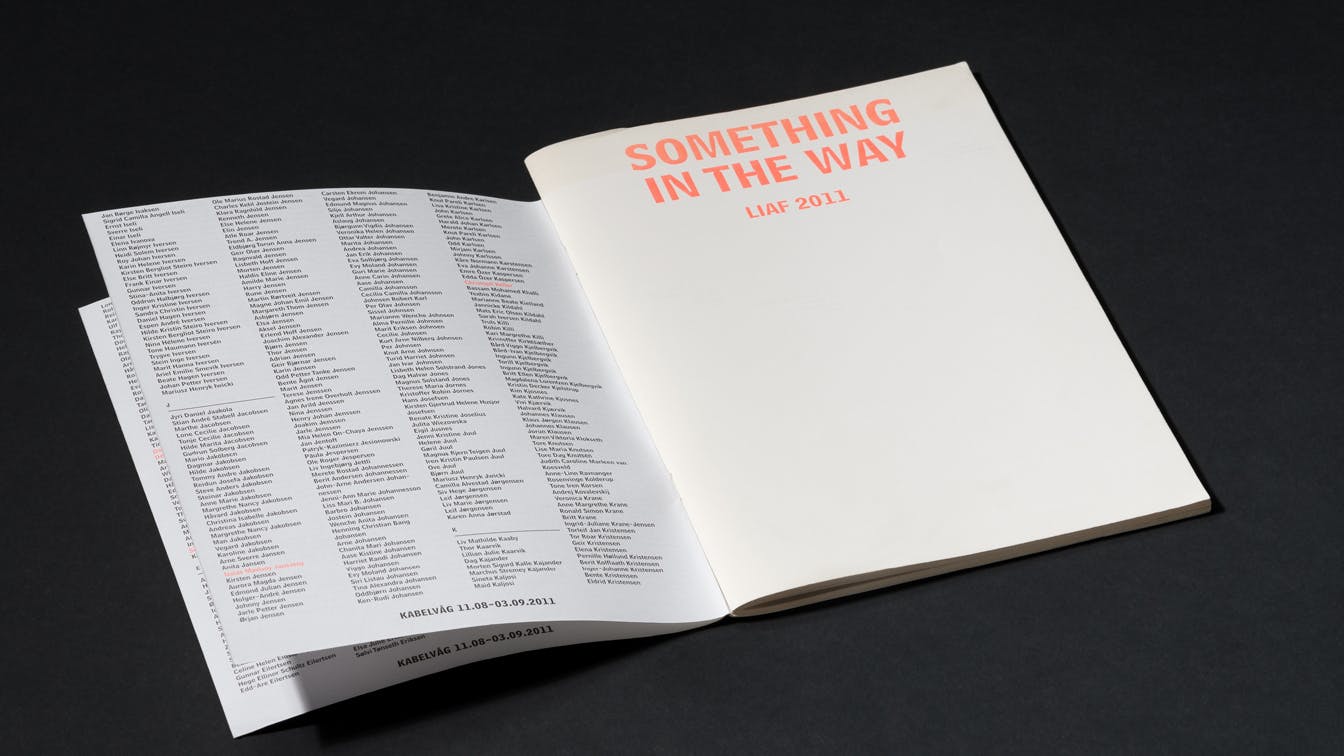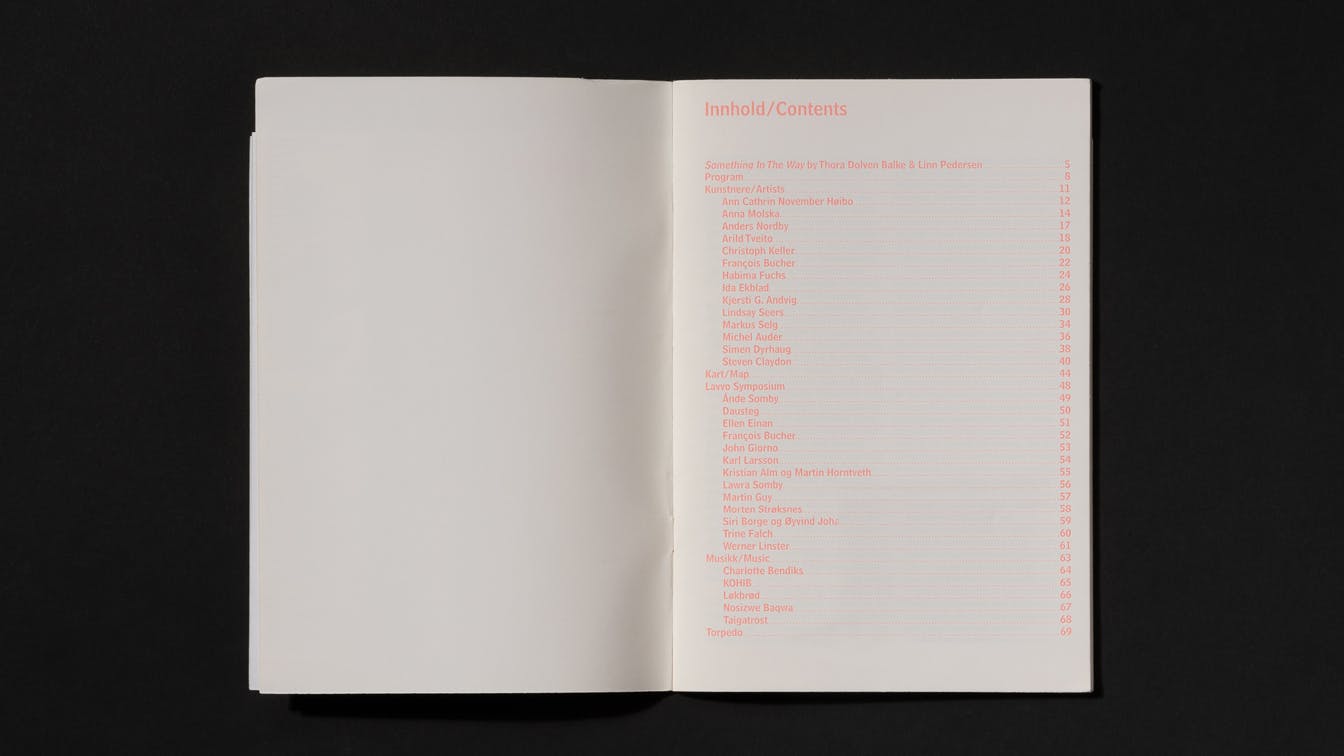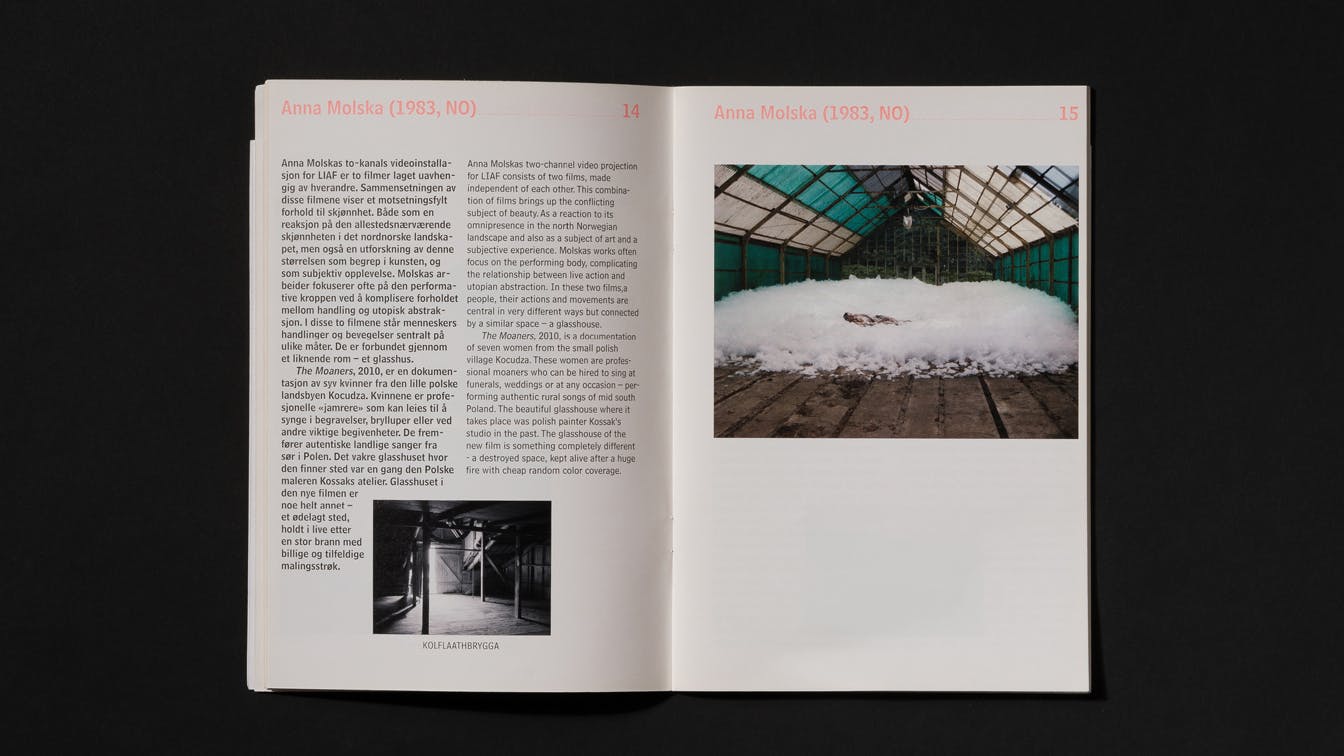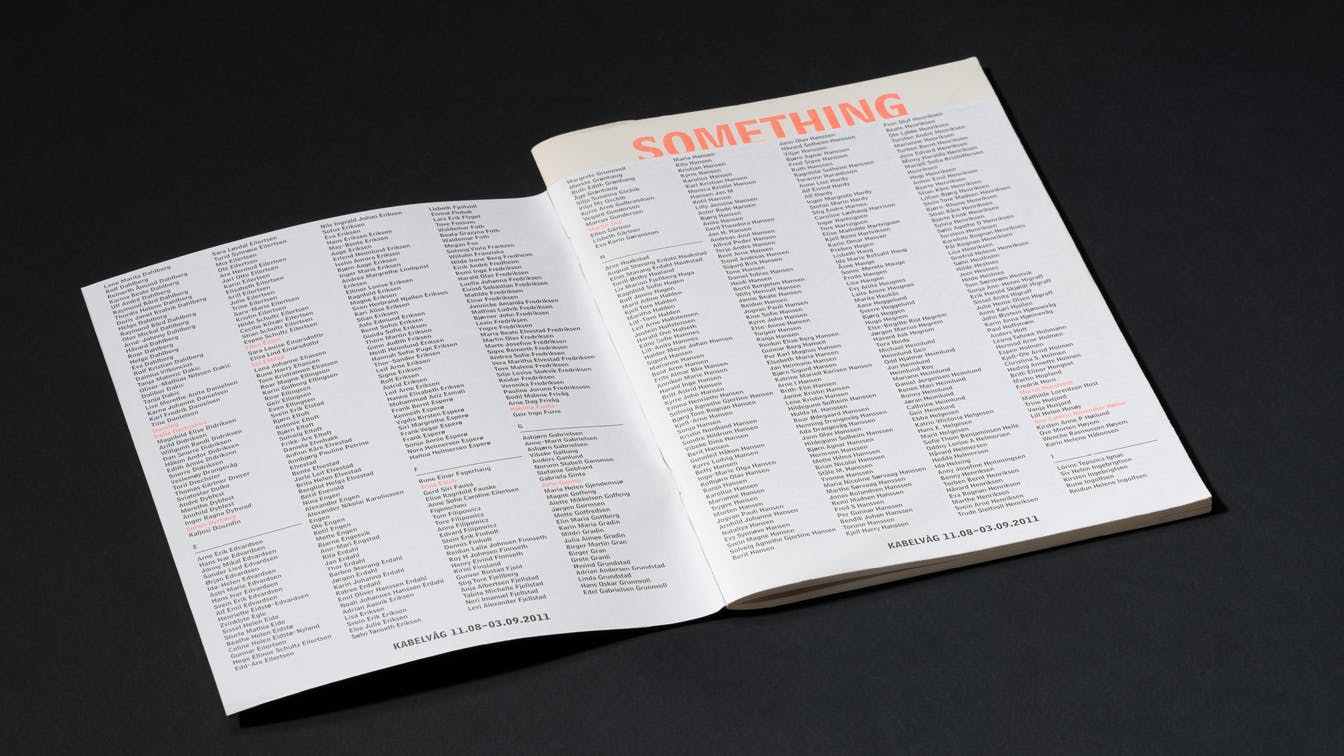
LIAFLofoten International Art Festival
Involving the local population 1700 inhabitants, 27 visiting artists
Strategy | Concept | Art direction | Campaign identity
Interaction with the locals
The Lofoten International Art Festival has previously been arranged in Svolvær, but in 2011 it moved to Kabelvåg – a small place where 1700 of Lofoten's 24.000 inhabitants live.
Arranging an international art festival in a small and hard-to-reach place comes with certain challenges. It also provides a number of unique opportunities. Beyond attracting current artists and a visiting audience, one is dependent on local involvement and enthusiasm. The interaction between the locals and the visitors was the starting point for the festival's outcome and the basis for the total experience.
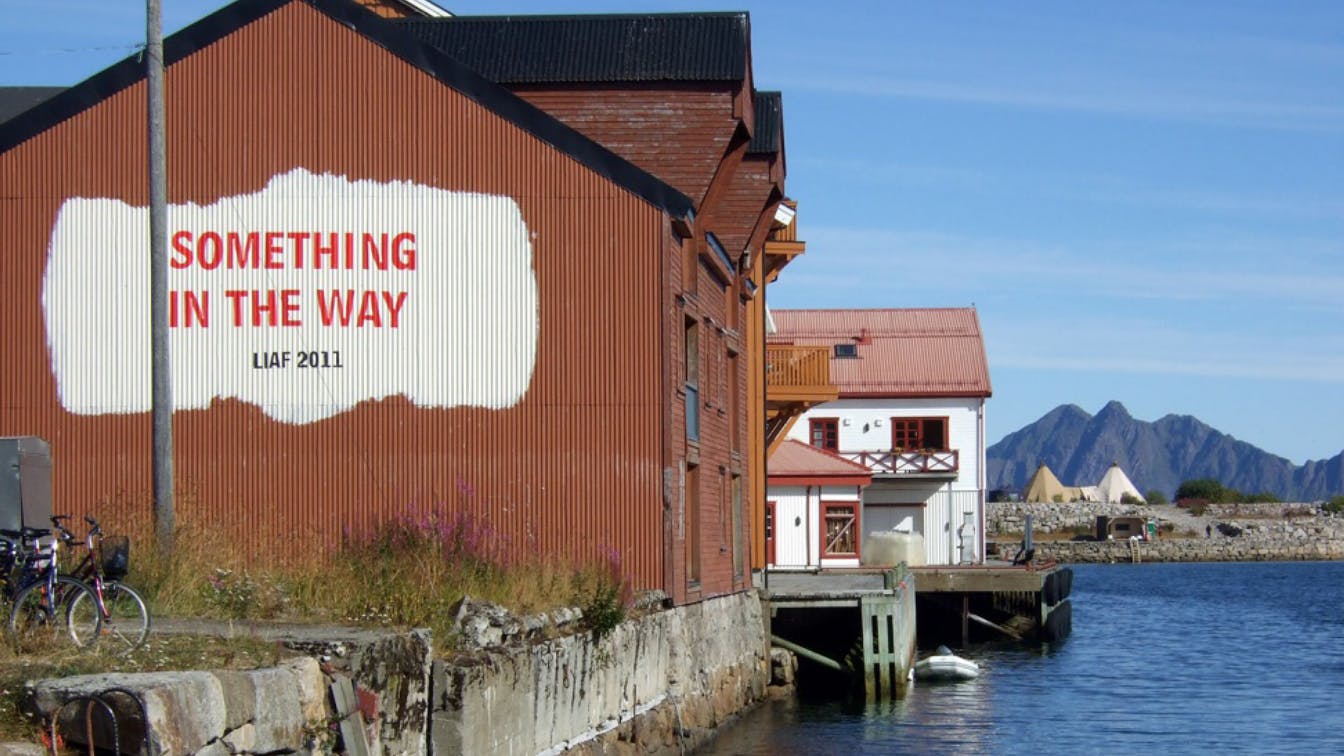
Local presence: LIAF painted on one of the buildings in Kabelvåg
Art changing the town, and vice versa
In contrast to other art festivals, the Lofoten International Art Festival is a concentrated, isolated and small festival. This makes the festival unique. The interaction between the artists and the 1.700 locals is tight and inevitable.
By making an alphabetical list of all the inhabitants of Kabelvåg, and incorporating the visiting artists in the list, we easily communicated the festival's unique identity – the interaction and equality between the locals and the visitors.
Small space, lots of information
Practical considerations became the starting point for the festival's visual profile. We had to create a typographic design language that enabled the communication of a number of names on the relevant communication surfaces, without losing readability.
In the US in the 1970s, when a new typeface for the telephone directory was to be developed, the challenge was similar: How does one accommodate a lot of text in the least amount of space without losing legibility? This was the starting point for the development of the Bell Centennial script, the typeface used as the basis for the Lofoten International Art Festival’s identity.
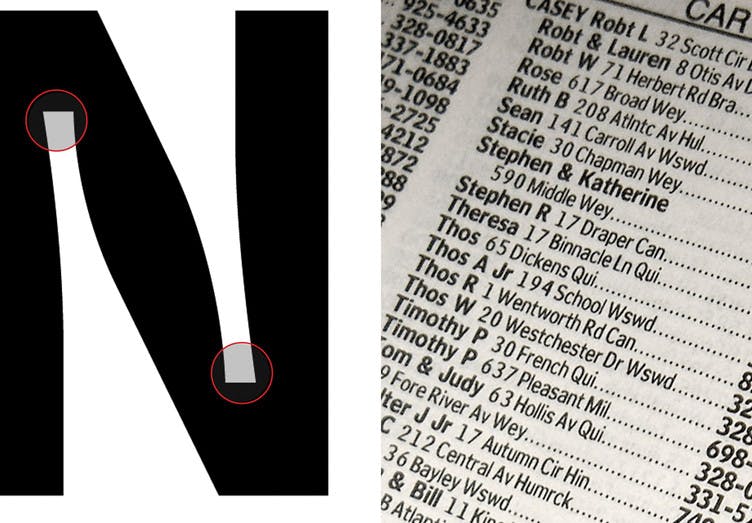
Small text: Bell Centennial has a distinctive designs to prevent the letters from growing together in small sizes.

Performance: Beat poet John Giorno at Liaf. Locals: Posters with the name of all the inhabitants of Kabelvåg.
Commitment and interaction
Involving the names of all the citizens in the communication created great involvement from the local community. Posters, tote bags and catalogues containing the names of Kabelvåg's inhabitants, became a natural starting point for discussion and dialogue between the locals and the visitors.
